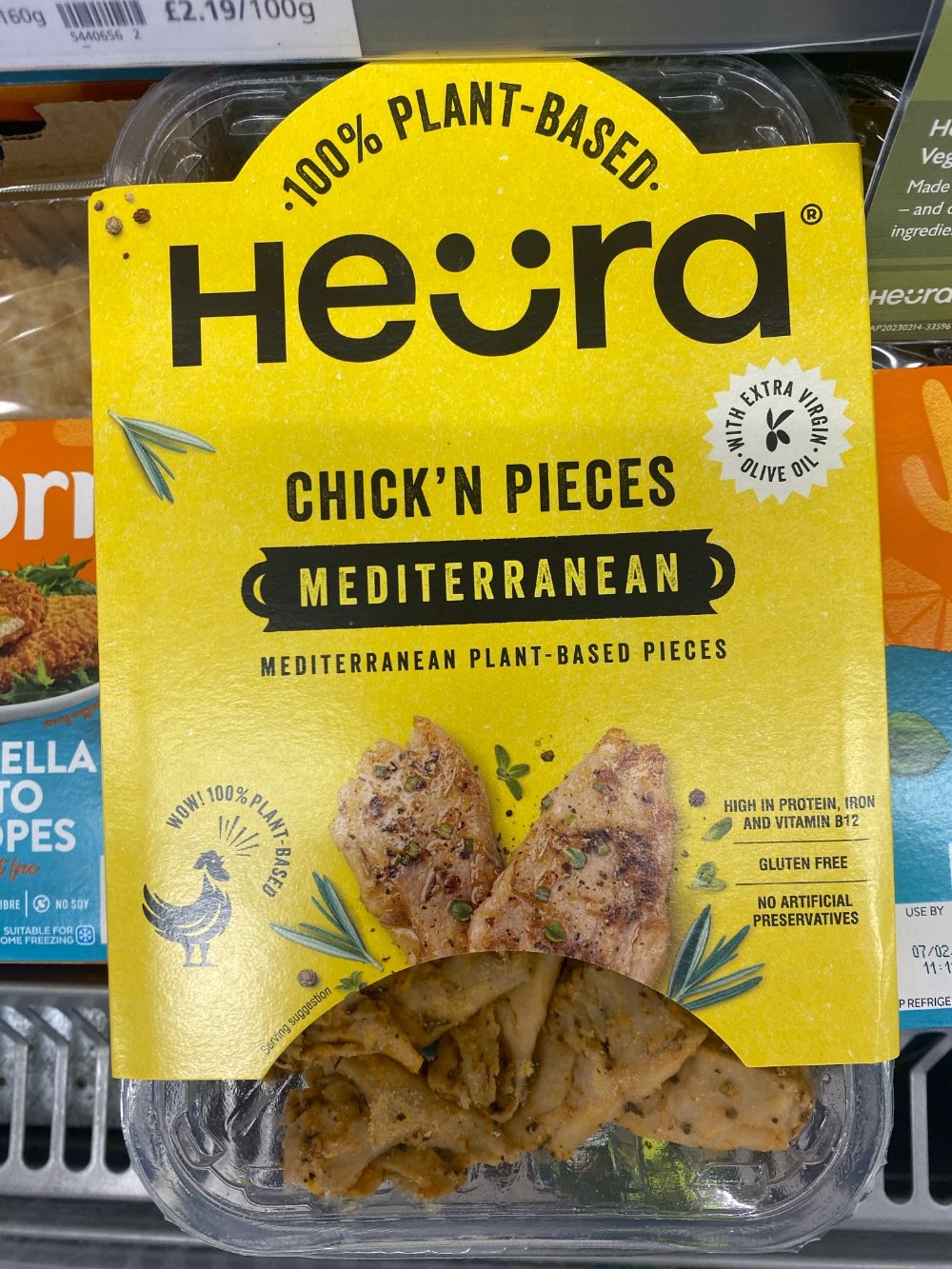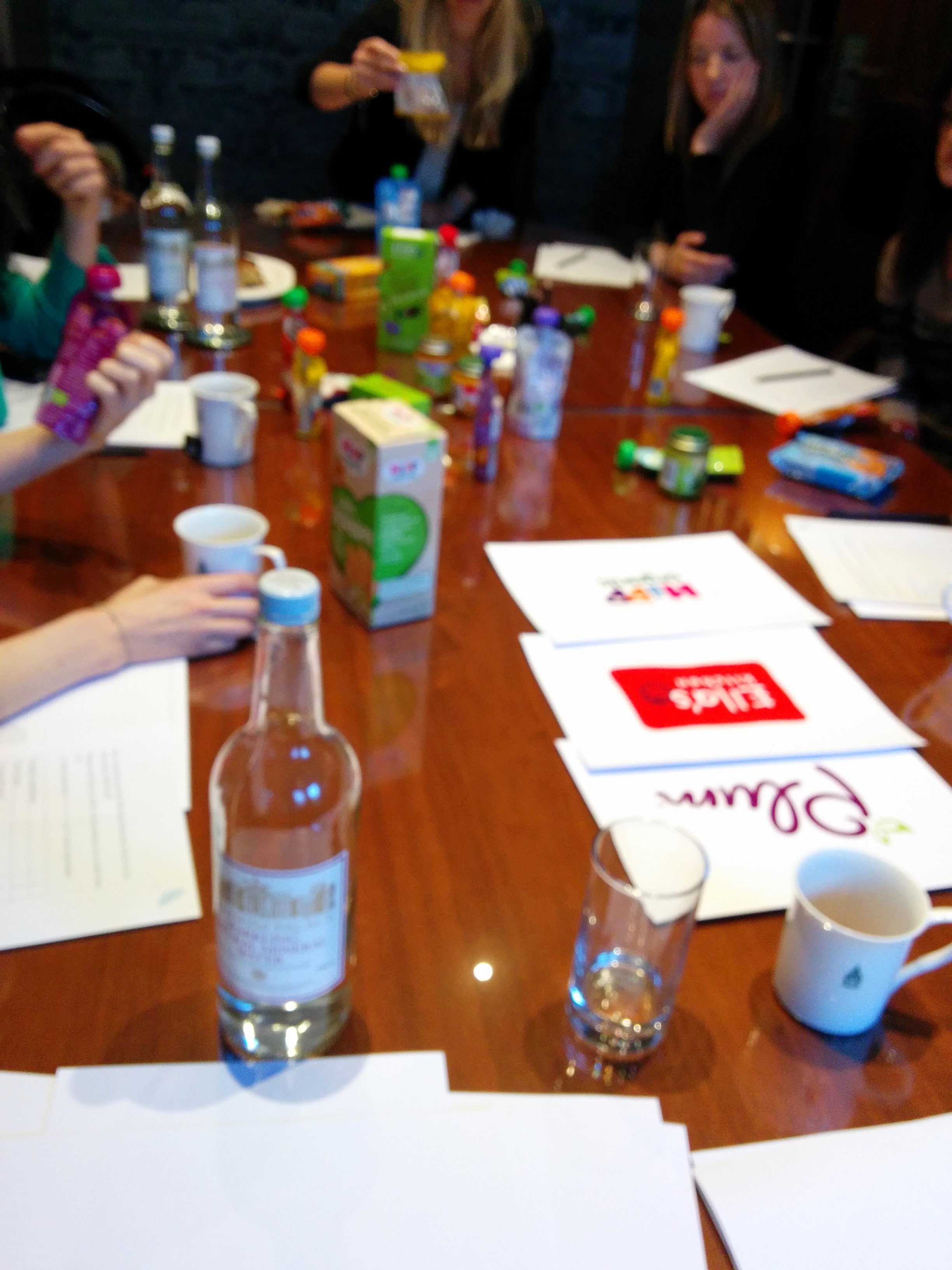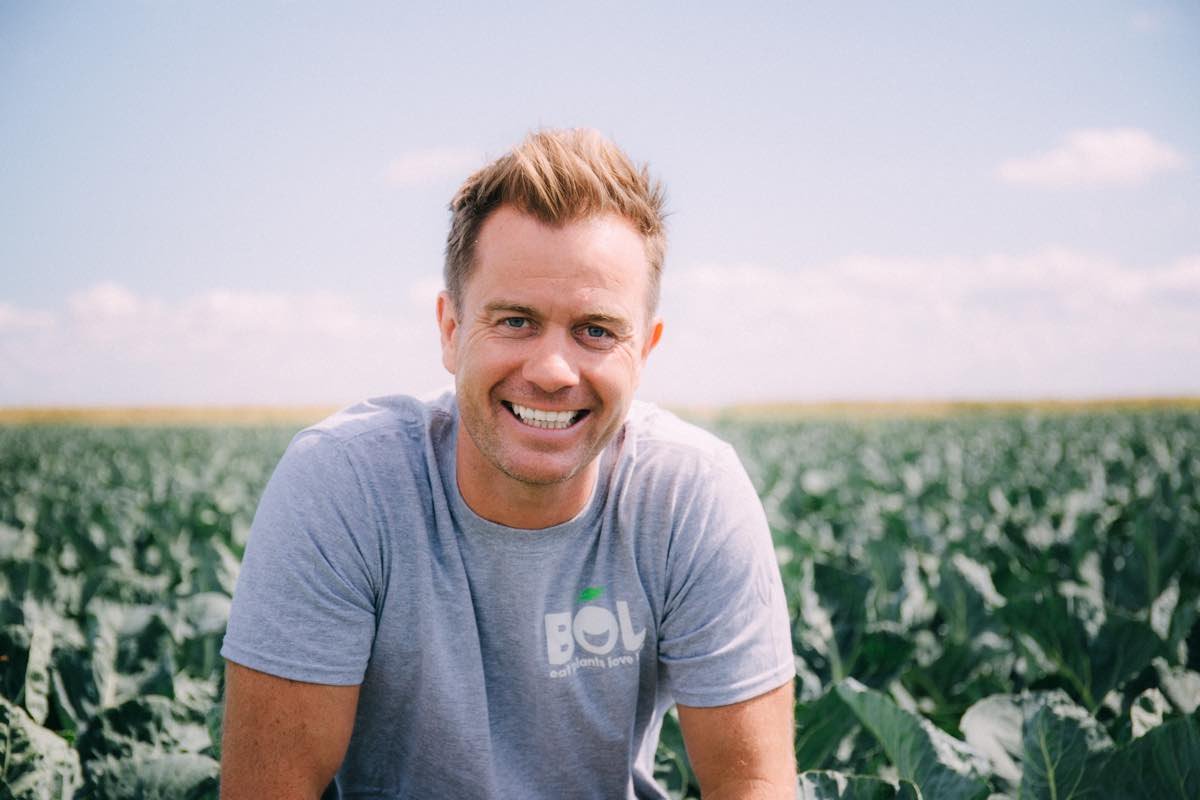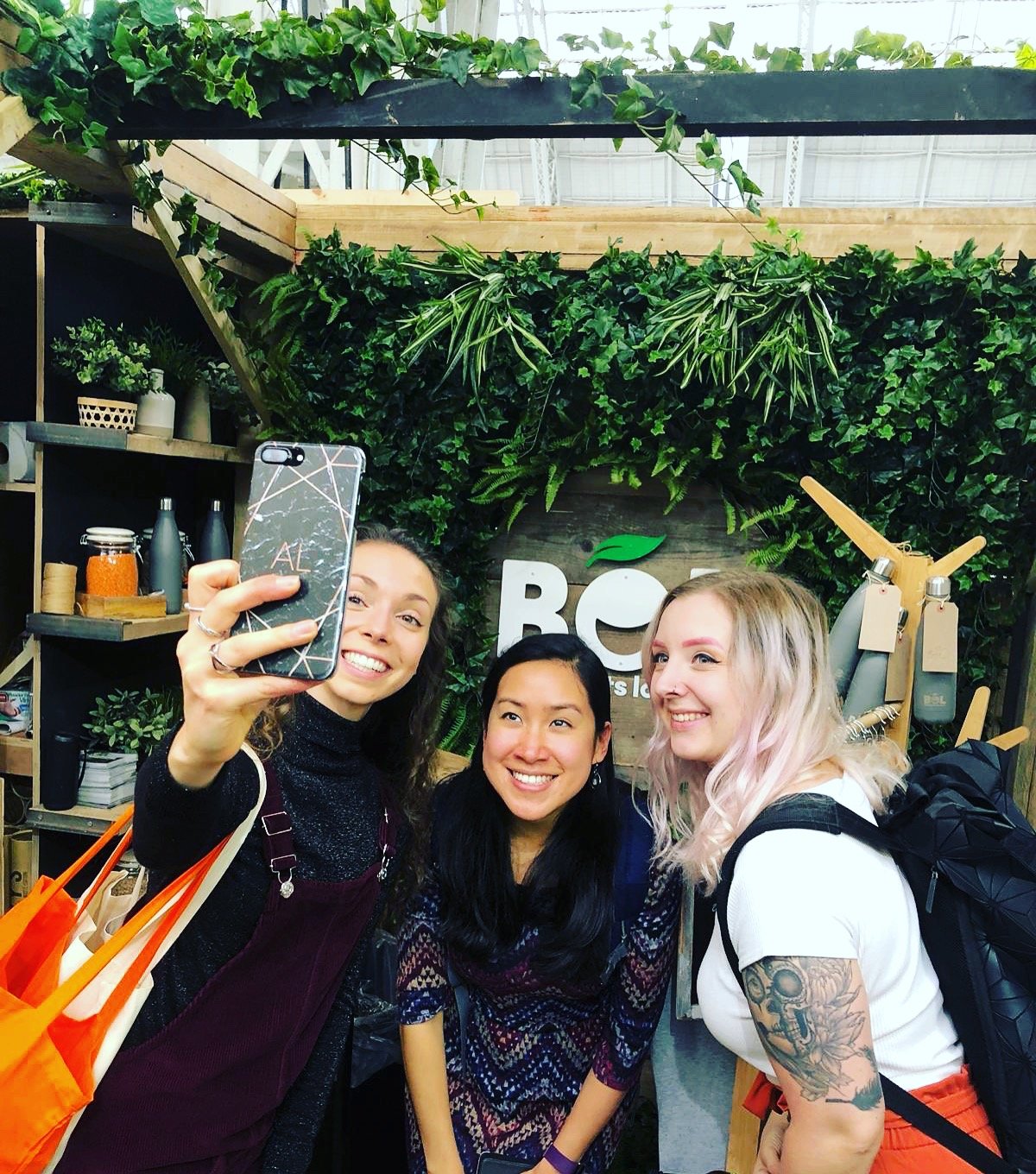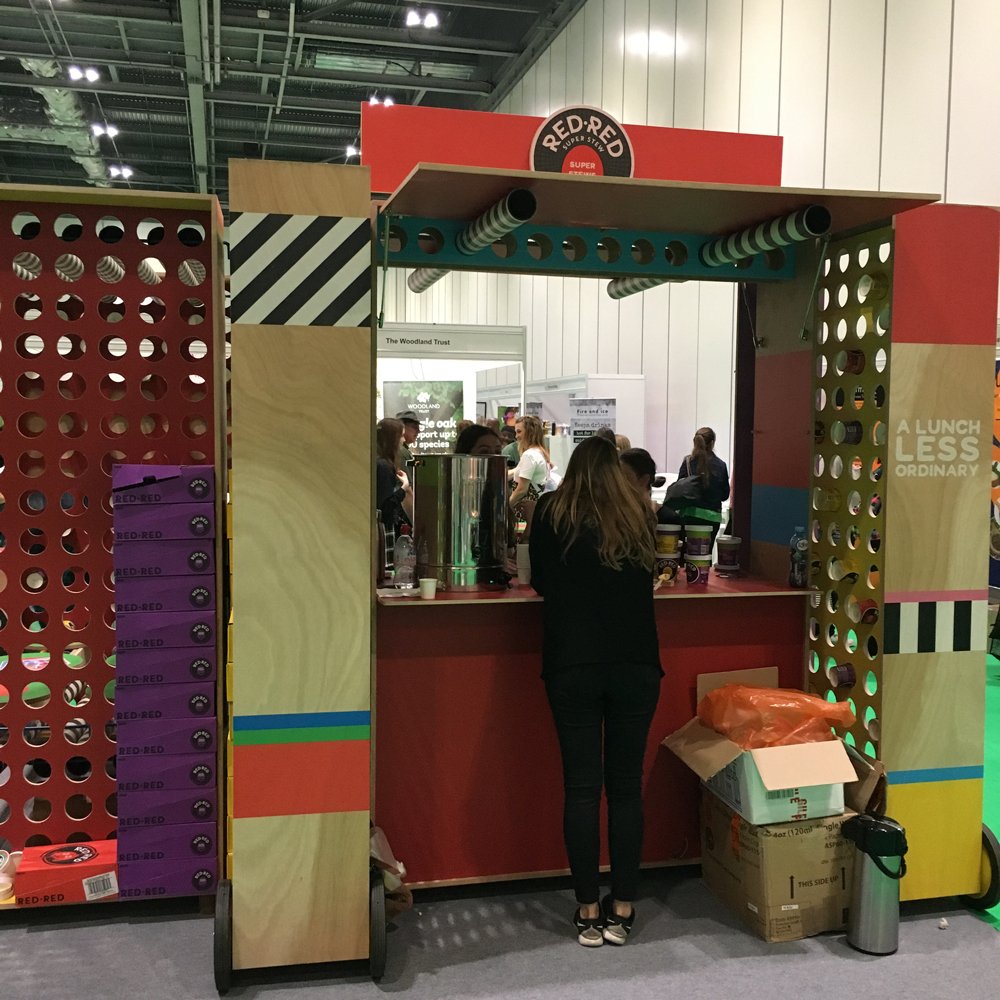Is being a flexitarian still a thing?
The meat-free category continues to grow globally. Flexitarian was term we encountered when completing some qual research several years ago. Are we now all flexitarian? Some desk research into the meat-free category in the UK.
A few years’ back we conducted some research for the UK’s leading tofu brand Tofoo to help them develop their next round of NPDs.
When this was conducted it seemed to be at the height of the growth in flexitarianism, a phrase coined by those in food marketing that defined those that were reducing their meat consumption in their diet, but weren’t willing to go all the way to become pescatarian or vegetarian. It was a quickly growing segment of the market.
Established brands like Quorn had and continued to create meat-free alternatives to everyday meat products, from mince and nuggets to bacon alternatives. New brands were appearing on the supermarket shelves at a rate that seemed weekly.
Now several years later, where do we find this segment of consumers?
Are they still regarded as flexitarians or have we all become flexitarians now?
How big is the meat free sector?
Do we still find these items in the “healthy living aisle”?
What are the triggers that make a type of customer choose one product over another?
We were interested to find out where the sector feels it is and thought we’d share what we found.
The meat free sector continues to grow, how big can it get?
There’s no doubt that it’s still a growing sector and doesn’t look like it’s slowing down.
“The global meat substitute market size was valued at USD 9.9 billion in 2021 and is expected to expand at a compound annual growth rate (CAGR) of 42.1% from 2022 to 2030.”
Meat Market Size Report and Forecast 2022-2030 - Grand View Research
But it’s a nuanced market and there's a lot to unpick. A lot of the market remains meat alternatives and less developed product areas remain the domain of a much smaller number of consumers. Products such as fish substitutes are still a very minor part of the overall sector and are yet to be developed into a range that is widely adopted.
What meat-free sub-categories are growing the fastest?
The largest sub-sector of the meat free market is the plant-based protein, items such as burger and sausage products remain the bulk of the market
“The plant-based protein segment held the largest revenue share of 34.8% in 2021 and is expected to maintain dominance over the forecast period.”
Meat Market Size Report and Forecast 2022-2030 - Grand View Research
However the mycoprotein segment is projected to grow at the fastest rate, with an expected growth rate of 43.2% from 2022 to 2023. This is expected due to the higher fibre and generally higher nutrient value of mycoprotein when compared to their plant protein alternatives. With a market that is predominantly driven by health concerns around eating too much meat, the nutritional and health benefits of alternatives are naturally going to play a significant role in product selection by consumers.
Innovation and collaboration continues to enable growth
With trends continuing to support growth in the sector, investment in new product development and development of geographical markets continues throughout the world.
“Investors have poured $16 billion into US plant based and cell based meat companies in the past 10 years. Including $13 billion alone in 2016-2017.”
Nielsen: Growing Demand for Plan-Based Proteins - Analysis Report Sept 2021
The cell based meat sector still has regulatory hurdles to overcome for acceptance around the world, with only a few countries making cultured meat available to consumers at this time. But it’s attracting plenty of investment, so we’re expecting to see some progress on the regulatory front over the coming years.
Part of the global growth is being achieved through partnerships between different organisations that can offer one geographical access to a market in an exchange for access to different innovation capabilities.
Tokyo based meat free food innovator, Next Meats, has teamed up with Indian based Vegan Meats to collaborate on food innovation and develop greater access to the largest global consumer food market, India. They’re hoping that by working together they can achieve rapid innovation in a growing sector and reach markets that they’d not have access to working independently.
“As India is the biggest consumer market in the world. Our products are high in protein, low in saturated fats with no added flavors and cholesterol. These items are just apt for people suffering from diabetes and blood pressure. We are excited to cater to our Indian consumers,”
What’s driving consumer interest in meat free alternatives?
So what are the main reasons that people are selecting to buy meat free products now? Are they the same reason that we found several years back when researching for Tofoo? As with market growth, it’s a nuanced set of reasons we find consumers turning to meat free alternatives.
So what are these driving factors? Is it environmental issues? Health issues? Animal welfare? Or are meat free alternatives cheaper than their meat counterparts? As you might expect, it’s not straightforward.
Impact of meat on health
It seems the primary reason remains personal health. By having less meat in our diets we’re seen as living healthy lives. However, as with nearly all of this area of food behaviour, it's complex to say the least with conflicting messages coming from producers and conflicting peer influences on both sides.
Lots of concerns remain, particularly with those that eat a predominantly meat based diet the majority of the time with the number of ingredients required to create the same levels of proteins in non meat alternatives versus the simplicity of animal based meat in its simplest form. Equally there remain lots of concerns about flavour and texture leading to less enjoyable eating experiences.
The desire for less meat in a diet is a self care driven motivation around an understanding that less meat can lead to a healthier you. But in similar self focussed motivation, the balance of achieving this better health is against a fear of less enjoyment in eating alternatives and in negative peer group feedback.
You can read more about this in The Food Standards Agency’s Food Psychologies Report on Public views around meat and dairy consumption. There’s some interesting conflicting dialogues going on here still that makes it hard as a food producer to target your customer.
Animal welfare
Unsurprisingly, animal welfare is one of the primary reasons for justification of food choices for those that had become vegan or strict vegetarians, but was less of an influencing factor for those that were regular meat eaters.
Developing products that were focussed on animal welfare messaging seemed to resonate well with those that had already made a shift in eating behaviour, but were not so good at capturing the attention of those that were at the beginning of making a consideration shift.
There seems to be another complex issue with consumers here. Most consumers do not wish ill of animals and would wish to see greater animal welfare. But some are more willing to accept the moral consequences of eating animals with the belief of better taste, texture and also a greater sense of eating something natural, rather than something that is manufactured. Which could be seen as an opportunity for some brands to take on with their product development and marketing.
Environmental impact
Whilst the consumer understanding of the environmental impact of large scale meat production is becoming a more commonplace topic of newspapers, it’s still a minority issue for the majority of consumers in the market for reduced meat or meat free products.
As expected, predominantly meat eaters see societal issues such as the impact of mass animal production on the environment as a lower priority when selecting what food choices to make. Vegans and vegetarians see this as another area to rationalise and justify their food choices.
As environmental concerns grow, and in particular those focussed on the impact of meat production, this may start to sway the behaviour of those that are not solely plant based food eaters.
Peer and ideological influence
The adages of “a balanced diet is important” and “eating meat and dairy makes you stronger” remain strong influencing ideas, without necessarily the supporting knowledge in consumers minds about how to achieve these goals or the why.
The impact of peer opinion also remains very strong on both sides of carnivores and vegan/vegetarians. With meat eaters fearing a backlash from their peer group around reducing meat and those that had opted to be vegan or vegetarian receiving equally negative peer group feedback on their eating habit choices. There are differences in this behaviour in social economic profiles and also geographically, with urban inhabitants receiving more positive support for reducing meat in their peer groups.
What does this look like on the shelves at supermarkets?
We’ve always got our eyes peeled for new brands entering the market and changes in those brands that are already present, from NPD to packaging changes. We thought we’d review a few of the products that are on our shelves today and reflect on the insight that we’d gathered above and what this might mean for these brands and their target audiences.
We’ve used the product packaging to highlight the triggers each brand has focussed on, to help them reach their target audience, but we’d expect these messaging focusses to remain consistent in all of their marketing channels and comms.
We’ve picked some supermarket own brands, some of the consistent producers and then some of the new products entering the market for comparison.
Supermarket Own Brands
Aldi - Plant Menu
Looks like Aldi have stuck to the “plant-based” route, although they seem to be mixing it up with meat substitution, with the “No” products in their Plant Menu range. They’ve included a “Vegan Friendly” mark, and the official Vegan Society mark, which from research could put some consumers off.
Product shots are very much in the traditional dinner replacement vein, with a clear play to simply switching this product out for your meat product. Overall and interesting mix of signals adopted by Aldi in their plant-based range.
Waitrose - PlantLiving (formerly PlantLife)
In a very similar fashion, Waitrose’s own range Plant Living is clearly plant based again. Some clearer good health attributes than the Aldi range using the nutrition traffic labelling system, indicating a healthier option, called out further by the inclusion of the “Good Health” in-store graphic. The products aren’t as traditional meat replacement, with some looking at the more fringe markets of fish replacement and then the traditional vegetarian products such as the Nut Loaf.
Waitrose we’re forced to change the name of the range, formerly PlantLife, to Plant Living after a trademark dispute, which in itself is an indicator of the market being highly competitive and growing battle for space for those in the plant based food category.
Sainsbury’s - Plant Pioneers
All of our supermarket own brands have clearly labeled or named their product ranges as “plant-based”, with Sainsbury’s calling their range Plant Pioneers. Most of the product packages have a “High in Protein” label to ensure they’re considered a suitable replacement to a meat alternative. Tesco’s take a similar line with their Plant Chef range, although their premium range is called Wicked Kitchen, but this could be regarded as targeting a more mature plant free audience.
Sainsbury’s seem to place themselves somewhere in the middle of the market, unsurprisingly. Looking to tap into the ingredient market with existing non-store brands such as Quorn, with their mince and chicken pieces replacements. But then mixing it up with prepared dinners such as Aloo Gobi Bakes and presenting a family vibe about their products.
Independent meat-free brands
Quorn
Quorn continues to occupy more space in the fridge and freezer sections in all supermarkets throughout the UK. But this doesn’t stop them from continuing to explore new product developments.
They have however seemingly developed a well targeted product packaging template. Using Meat Free, High Protein symbols and other health related icons. Cost saving triggers with economy packs etc. Allowing their products to comfortably occupy freezer space next to oven chips, fish fingers and frozen meat pies with no sense of moral requirements to select them as a product to go into any families supermarket trolley on a weekly basis.
Gardein
Gardein (Gardein being Garden + Protein) are a US based brand that are part of the Conagra portfolio, producing a range of meat free alternatives to regular ingredients products, such as mince, through to ready to eat products like chicken nuggets or battered fish fillets.
Using a proprietary labelling approach to key product details they called out the Protein per serving, calories and cooking time. We noticed that they also make a point of advertising the fact that their products are Non GMO. There’s a clean or somewhat sterile feeling to their packaging design that doesn't feel as “earthy” as many meat-free products, feeling more in the supplement market. If Sainsbury’s own range felt they had a family feel to them, these have more of a young professional feel to them, somehow?
Cauldron & THIS
We’ve brought these two together as they were snuggly placed next to each other in the fridge section. It’s also quite helpful to see them sitting next to each as a brand positioning comparison.
Cauldron have been a stalwart of the stricter vegetarian market for decades in the UK. They’re much more focussed on being “vegetarian” than necessarily claiming to be meat free. Interestingly they’ve got a very clear Carbon Neutral message on their packaging, which would align with one of the triggers for the clear vegetarian market or vegan market.
THIS, relatively new to the market in comparison to Cauldron . No direct messages about the environment here, other than calling out the 100% plant based, but priority given to Low Fat, High Protein and Source of Fibre, which would align with those choosing traditional meat replacement products for health reasons. THIS packaging feels very similar to how you’d see animal based meat displayed, with clear packaging. There seems to be no reference to the product being suitable to vegans on the front.
Heura
The relatively new kids on the block in the UK, Heura with meat like substitutes, although they like to call themselves “successors to meat”. Barcelona based startup with co-founders Bernat Ananos Martinez and Marc Coloma seem big, friendly advocates of plant based food, which always helps when you’re trying to grow a brand. No mention of vegetarian or vegan in the packaging, instead 100% Plant Based. Clear protein content and also calling out fibre, iron and added vitamin B12 to appeal to those looking after their health and looking for an easy protein replacement for meat.
We also noticed that Huera have noted that their product uses Extra Virgin olive oil, giving a premium feel, but also tapping into the “good taste” area of customer triggers. It’s bright, fun and looks like it should make you smile.
Pieminister
We were interested to include Pieminister in this review as they’re not a vegetarian producer by default, instead a pie producer that’s using their credentials as a valued brand to expand their market and potentially attract some of their existing customer base that are looking for a meat free alternative.
With this considered, you can see that the two things that are present on their packaging that we’ve discussed are “Plant Based” and “Great Taste”, there’s no mention of protein content, health benefits or nutritional values.
It’s indicative of the opportunity that all brands that operate in similar spaces see as available in the meat free category.
Beyond Meat
Spotted Beyond Meat in the supermarket I visited the other day for the first time. Whilst they started up in California a while back, with their first products hitting the shelves in 2012, it’s only in the last year that they’ve been making inroads in the UK supermarkets. A very simple packaging, but really clear and functional. Plant-based, meat replacement. The second largest font on the label is reserved for the protein amount per serving, in a similar fashion to what you’d expect to see on a supplement package.
Beyond Meat has raised over $122 million in startup funding so far, there’s plenty out there that see producers such as themselves as the future of the plant based market. However, it hasn’t all been smooth sailing for brands such as Beyond Meat. They wrote off nearly $6 million ($5.8 million) in costs last year after stopping production of a NPD for Beef Jerky, so they’re still finding their market and customer needs.
La Vie
La Vie is a French brand, that I’ve not encountered before, that’s filling a niche market - meat free bacon and lardons. Bright and cheerful packaging with a Great Taste Award to reassure consumers of taste focus in the product development. They’ll be going up against the longer established THIS for market share of the bacon replacement (Quorn also have a bacon product).
In comparing the two against each other (THIS and La Vie), both call out the 100% Plant Based, High in Protein, but La Vie leans more into the strict vegan/vegetarian customer profile with the “Vegan” suitability and the “Better for the Planet, with THIS leaning more the other way and going for a meat like approach to visual appearance.
Other than that, with a clearer focus on existing stricter vegetarian customers, there seems to be fun feel to the brand, celebrating the role the customer makes in living “the life” of a meat free eater.
So what does this all mean to meat free producers and brands? And, is flexitarianism still relevant?
We’ve reviewed just some of the insights that are available in the market for meat free brands and organisations, but there’s many more areas that can be explored and further insight developed.
It seems that there remains a demand for reducing meat in our diets but it’s a complex equation of needs. For us, flexitarianism and first coining came at a time when there was a shift in consumer behaviour to reduce meat in all of our diets, mostly for health reasons. Whilst this need still exists and still shapes consumer behaviour, flexitarianism has become the new norm. There are less 7 days a week meat and 2 veggers in our society now, many of us now have a meat free main meal in our weekly diet.
However, what useful things can we conclude from what we’ve discussed here?
Know your target audience
Given the complexity of the influencing factors on consumers in this market, more so than some other markets, it’s essential to know who your target audience is and how you're targeting them.
Are they meat eaters looking to reduce their meat intake or are they vegetarians looking to find an easier meal to cook?
Are they more looking to improve their health but don’t understand how plant proteins are developed as ingredients?
What are their triggers for selecting brands and products?
Focus on the things that have the greatest impact when developing NPDs
Once you know who you are targeting, bring focus to the things that are going to make your customers choose your product over a competitor's product.
Are you going to win them over if you call your product “plant based” of “meat free”?
Is it better to include a “Vegan Friendly” logo or not?
How important are the nutritional traffic light symbols to your product's popularity?
Tell your brand story
Are you a fun loving brand, or is it all about function over form?
Engage your potential customers in a way that wins them over, but also delivers all of the attributes that’s going to lead to a customer choosing you over a competitor.
Make sure you’re consistent. What are you looking like and talking about on social and web right now?
How we can help you…
References:
Food Standards Agency: A rapid review of the evidence on the factors underpinning the consumption of meat and dairy among the general public: https://www.food.gov.uk/research/behaviour-and-perception/a-rapid-review-of-the-evidence-on-the-factors-underpinning-the-consumption-of-meat-and-dairy-among-the-general-public
Food Standards Agency: Psychologies of Food Choice: Public views and experiences around meat and dairy consumption: https://www.food.gov.uk/research/behaviour-and-perception/psychologies-of-food-choice-public-views-and-experiences-around-meat-and-dairy-consumption
NIH: Mycoprotein: The Future of Nutritious Nonmeat Protein, a Symposium Review: https://www.ncbi.nlm.nih.gov/pmc/articles/PMC6554455/
Statista: Market revenue of plant-based meat worldwide from 2016 to 2027 - Dec 2022: https://www.statista.com/forecasts/877369/global-meat-substitutes-market-value
Grand View Research - Meat Substitute Market Size and Growth Trend Analysis 2022 - 2030: https://www.grandviewresearch.com/industry-analysis/meat-substitutes-market
Nielsen: Growing Demand for Plan-Based Proteins - Analysis Report Sept 2021: https://nielseniq.com/global/en/insights/analysis/2021/examining-shopper-trends-in-plant-based-proteins-accelerating-growth-across-mainstream-channels/
The Grover: Battle of the burgers: plant-based category report 2020: https://www.thegrocer.co.uk/category-reports/battle-of-the-burgers-plant-based-category-report-2020/647607.article
Food Institute :Investment in Lab-Grown Meat Intensifying - July 2022: https://foodinstitute.com/focus/investment-in-lab-grown-meat-intensifying/
Indian Retailer: Plant-Based Company Next Meats Forays into Indian Market, Launches Meat-Free Alternatives: https://www.indianretailer.com/news/plant-based-company-next-meats-forays-in-indian-market-launches-meat-free-alternatives.n12449
The power of insights for a plant based living brand
Make it beautiful… as a species we’re attracted to beautiful things. We always wanted to make genuinely healthy products and nutritious products for our customers, but making them look beautiful at the same time makes them so much more attractive and is also why all of our packaging is transparent – we want you to see what’s inside.
Recently I met with Paul Brown, founder of BOL Foods, to talk to him about how customer and sector insight help BOL to deliver better product and service experiences.
BOL are an amazingly dynamic food brand, that hold their values against everything they do. When a brand has such strong values, it’s great to hear how insight is used to ensure they do what they say.
Tell us about yourself and your role within BOL
I’m the Founder & Managing Director of BOL Foods and have been since we started on 29th April 2015. Prior to that I’d worked at Innocent for 14 years. I manage the company and its product range on a day to day basis.
Tell us about BOL and its products and services.
We make tasty, healthy, beautiful plant-based foods for busy people on the go. We started-up back in 2015, when we also had products that included meat in our range. However, in 2017 we decided that we were going to be a vegan company moving forward due to the overwhelming evidence of its benefits for health and the environment; overnight we halved our product range removing all meat from the range. This Summer (2018) we finished the transition, removing the last diary ingredients from our range. We now champion the vegan sector and its merits for all.
How do you find out what your customers think about your products and services?
We’re very engaged with our customers, mostly though social media channels. It’s a full-time role managing all of the feedback from our customers via social channels.
As well as social, we also do sampling sections in-store and attend as many events as possible, where we talk with customers face to face.
Getting to hear what our customers think is of upmost importance to us.
How are customer insights used by your product or service delivery teams?
All the time. We’ve adapted numerous products over the years off the back of customer feedback. We often approach our customer base via social channels or via our #PlantLife blog to ask for help about recipe decisions for our product range, to see what they say.
Do you have an example of successful product or service development that was driven by customer insights more than usual?
We have a number of examples of this.
When we moved to a vegan only range, the last of our products were altered in the Summer, dropping diary entirely from the ingredients. One of the ingredients that went during this process was feta cheese. In the lead up to feta’s removal from our products we asked our customers what they’d like to see go in its place – customers suggestions included ancient grains and lentils, amongst many other suggestions. This source of feedback was an integral part of this successful migration.
Another example, our Super Soup range pot size was directly designed through customer feedback. New Covent Garden Soups had revolutionised the soup market when they launched, bringing fresh ingredients via their carton packaging. However, the feedback we got from our customers was that the 600ml carton they’d chosen, then rapidly adopted by many other producers, was a little too large for one person and not quite enough for two. We decided to buck the market and create a purpose-built container at 500mls, that was a lot more suitable for a single serve of soup. This has been widely praised by our customers.
With the growth of customer feedback channels and global communication over the last decade, how has this affected your product and/or service delivery?
As we’re not that old, these feedback channels have always been part of our product and service delivery. We’ve always been engaged in social channels with our customers and they’ve influenced our product and service delivery from day 1.
What’s your understanding of “product truth” and how important is this as a concept to you and your organisation?
Product truth is very important to us. Our products deliver our values and customers’ needs at all times. We need them all to taste good and do you good. Tasty, delicious, plant-based food. Our packaging is the same – no compromise on values through product delivery at any step, we’re always looking to innovative to further prove this. No product would be in our range, if we didn’t believe it truthfully represented what BOL stands for.
If you had a mantra for product success, what would it be?
Make it beautiful… as a species we’re attracted to beautiful things. We always wanted to make genuinely healthy products and nutritious products for our customers, but making them look beautiful at the same time makes them so much more attractive and is also why all of our packaging is transparent – we want you to see what’s inside.
AFTER THOUGHTS
It was great to meet with Paul and the team at BOL. Having such strong positive values can be rewarding and provide you with a clear direction, but it requires commitment to ensure you’re able to stand up to constant integration about your decisions and actions.
But being this committed and transparent, allows BOL to ride on a wave of positive sentiment in the sector, but also to be championed as thought-leaders, that can be delivered via their comms channels which includes their active #PlantLife blog.
If you’re interested in taking part in our Thoughts from the Frontline series and play a role in an organisation or a brand’s product or service delivery, get in touch via our contact page and we can speak further.
Or, if you want to learn about how we might help you to gain further insights into your product sector and customer base to change the product or service experience or perception you deliver to market at the moment, drop us a line. We like to talk.
Plant based futures
We travelled down to Plant Based Live, a vegan food show, held at the Excel Centre in London. We like to get along to trade exhibitions and shows every once in a while, they’re always great places to get a view on a sector and develop insights, with new startups often present alongside more established brands. But it also gives you a sense of the pulse of a sector, what trends are emerging, who the customers are and what they’re looking for. It’s a great space to walk around and catch up with brand owners, talk about the challenges the market is facing and product or service developments in the sector.
A few weeks ago we travelled down to Plant Based Live, a vegan food show, held at the Excel Centre in London. We like to get along to trade exhibitions and shows every once in a while, they’re always great places to get a view on a sector and develop insights, with new startups often present alongside more established brands. But it also gives you a sense of the pulse of a sector, what trends are emerging, who the customers are and what they’re looking for. It’s a great space to walk around and catch up with brand owners, talk about the challenges the market is facing and product or service developments in the sector.
We thought we’d share a few thoughts that we took away from the trip down and what we saw as key themes.
Red Red
Red Red had what could fairly be described as the most intriguing or extravagant stall at the show. A relatively new player in the market, Red Red Super Stews are a Unilever funded startup that is vibrantly and vigorously entering the market with a big push. In their words “A Lunch Less Ordinary – Mixing up the energy of Africa with vegan vibes and fast-paced London lifestyles, Red Red is an all-singing all-dancing mouthwatering meal pot that cooks up the kind of kicks you wouldn’t have thought possible in just seven minutes.”. With their brightly strewn Instagram channel and event activity, it’s clear that Unilever see a large market in the Gluten Free and Vegan sector and want to ensure they have their share. Whilst it’s not unexpected to see large global brands making their footprint in a growing market, it’s both a reassuring sign that the sector is growing and profitable, but equally that it’s no longer just the domain of small to medium sized businesses.
mages courtesy of VeganNightsLdn
Social is where it’s at, still…
Along with a the vibrant stores and exciting new product appearances were the smiling, healthy looking faces of the young, socially motivated ambassadors and advocates of the rising vegan community. Bloggers, Instagramers, YouTubers, Snapchatters were in full attendance. From the speakers on the various stages, to interviews and live streaming that was going on during the event, this is a vibrant and in-touch community that is social by its nature. Whilst the vegan market might have been the domain of a different consumer profile a decade ago, all of that has changed now and the new faces of the vegan world are very much talking about it. We all need to embrace the energy and enthusiasm of this audience and ensure we get the right partners and ambassadors that correctly match our target audience and reflect our brand vision and values. Take some time to review some of the Instagram accounts of the new vegan generation, it’s bright, colourful, sporty and young.
Product packaging and the plastic problem
It was talked about several times over the weekend, from casual conversations, to Paul Brown talking about BOL‘s attempts to reduce packaging and plastics from their product range. It’s a big conversation that’s going to take some serious action from the main supermarket buyers in the market, but it’s a conversation that’s not going to be going away any time soon. In a recent survey by ThoughtWorks, 57% of respondents put reducing packaging and plastic use ahead of price – https://www.thoughtworks.com/news/groceryretail2030 . If you’re not addressing this concern already, you’d be advised at least to start talking about what you’re doing to do to address this and other environmental issues that many brands face and share this as an insight to your customers.
Vegan Products vs Vegan Producer
The event was predominantly attended by vegan producers as you’d expect, however one of the busiest stalls at the event was that of HECK Foods. Despite the fact that HECK sell many products that contain meat, let alone are not vegan, the HECK stall did a roaring trade by giving away products all weekend in return for a social “like”. This might be down to lack of consumer knowledge about their other products or it could be down to the simple fact that no one turns down a freebie – but HECK weren’t hiding the fact that they also produce meat based products, although obviously they didn’t have any on display that day. But one thing was clear, a producer could have success in the vegan market without necessarily being a vegan only brand. The sector seems no longer the domain of pure vegans. Flexitarian is a term that was coined not so longer ago in the vegetarian food sector, those looking to actively reduce their meat consumption, but still eat the odd meal containing meat. Who are the consumers in the vegan food sector, are we seeing a similar reflection of the flexitarians that are now common in the vegetarian sector and what are their buying concerns?
Protein is king
We all know it already, but the conversation about the importance of protein in our diets continues to dominate consumer questions about products. The outcome of this is that consumers are becoming for more educated in the types of protein sources available and the best methods of hitting their protein daily goals. From growing families to those looking to carry a bit more muscle weight, protein is going to continue to be of interest to those taking care in what they eat; who are growing in number by the day. Being aware of the protein values in products and how you might better highlight those on your packaging or improve the quality of the protein in your products, is going to continue to grow in importance.
Plant Based Live
It was the first run of Plant Based Live and overall it felt like the event was in the right spirit, but perhaps felt quieter than might have been hoped for such a vibrant, energising sector. Whilst there were numerous live talks, cooking sessions etc. it felt like it missed something more dynamic and perhaps engaging in terms of format, aesthetic and use of the space. We don’t have any fast suggestions on how to achieve this, but it may be related to reflecting the wider community space and lifestyle choices that many who are opting to be vegan are also adopting. We’d been to the Balance Festival earlier in the year and this did feel like it fulfilled the “festival” title it had given itself. Tying into more of the lifestyle aspects of the new generation of health seeking, food conscious, active individuals seeking a “better self” through choices such as a vegan lifestyle. Whilst it would be daft for Plant Based Live to replicate the Balance Festival, they do need to find create their own space, it felt like some of the broader sense of the vegan sector could have somehow been further integrated into Plant Based Live. We saw the team at Plant Based Live actively engaging with both exhibitors and consumers over the weekend, so hoping that next year’s exhibition will build on this year’s good experience to make it even better.
If you need help further insights into your customers or developing market trends, get in touch to see how we might be able to help you and your organisations get the insight it needs.













